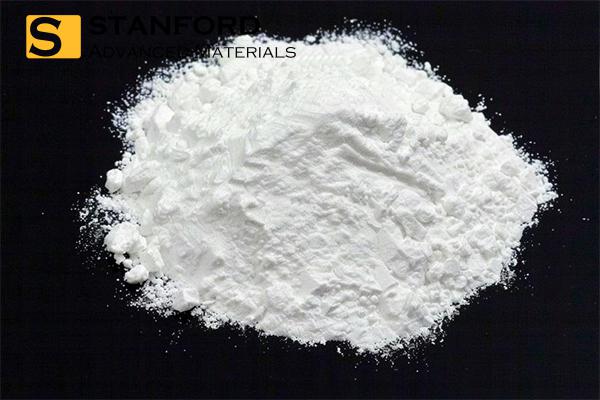Formamidinium Bromide Description
Formamidinium Bromide (FABr) is a chemical compound with the formula CH(NH₂)₂Br. It consists of a formamidinium cation (FA⁺) and a bromide anion (Br⁻). This compound is widely used in the fabrication of perovskite materials for various optoelectronic applications, including solar cells, LEDs, and photodetectors.
Formamidinium Bromide Specification
|
Appearance
|
White powder
|
|
CAS No.
|
146958-06-7
|
|
Chemical Formula
|
CH5BrN2
|
|
Molecular Weight
|
124.97
|
|
Purity
|
≥98%
|
|
Solubility
|
Soluble in water
|
|
Melting Point
|
135℃
|
Formamidinium Bromide Applications
FAI-based perovskites offer improved efficiency and long-term stability for solar cell performance.
FAI is a popular choice in tandem solar cells and in hybrid halide perovskite compositions, which can have mixed cations (formamidinium, methylammonium) to optimize efficiency and durability.
Besides solar cells, FAI is also studied for use in other optoelectronic devices, such as light-emitting diodes (LEDs) and photodetectors.
Formamidinium Bromide Packaging
Our Formamidinium Bromide is carefully handled during storage and transportation to preserve the quality of our product in its original condition.
5g/glass bottle, or customized.
FAQs
Q1: How is Formamidinium Bromide used in solar cells?
Answer: FABr is combined with lead bromide (PbBr₂) to form perovskite materials like formamidinium lead bromide (FAPbBr₃). These perovskites have a higher bandgap compared to iodide-based perovskites, which makes them suitable for use in tandem solar cells that capture different parts of the solar spectrum.
Q2: What makes Formamidinium Bromide better than other halides like Methylammonium Bromide?
Answer: FABr forms more stable perovskite structures compared to methylammonium bromide (MABr). FABr-based perovskites have better thermal stability and moisture resistance, which leads to longer-lasting devices and improved performance under real-world conditions.
Q3: What is the bandgap of Formamidinium Bromide-based perovskites, and why is it important?
Answer: FABr-based perovskites, like FAPbBr₃, have a bandgap of around 2.3 eV. This higher bandgap makes them ideal for applications where selective light absorption or emission is required, such as in tandem solar cells where different materials absorb different wavelengths of sunlight for improved overall efficiency.
 Get a Quote
Get a Quote
